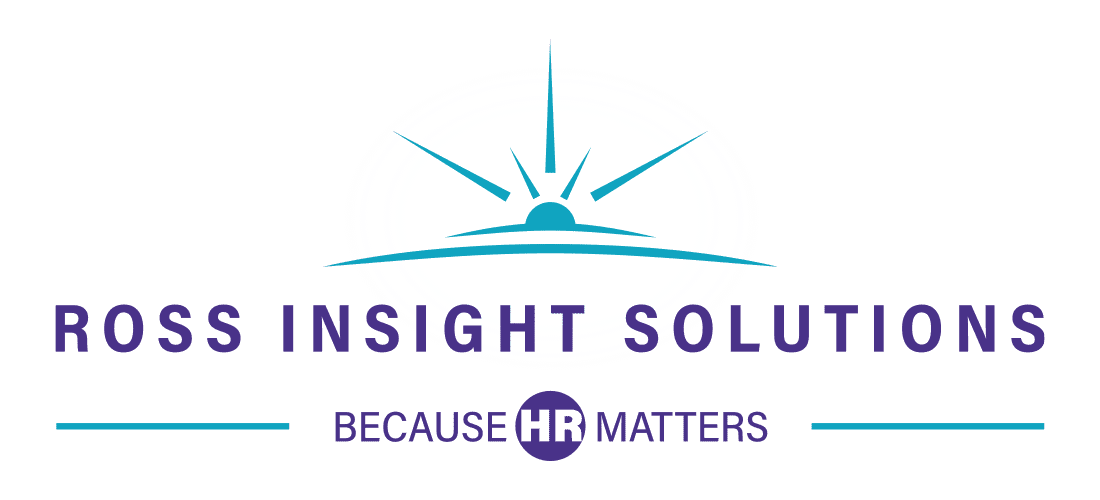
Mental Health: Good Business Strategy
Employee wellness has been a hot topic in the workplace for decades, with companies being more cognizant of their employees’ health needs and many companies investing in wellness programs. This is a fantastic benefit for employees and also increases employee engagement and loyalty by demonstrating that employers care about their workforce. These programs have historically focused on areas such as exercise, weight loss, diabetes, heart disease, and other aspects of physical health. Since the COVID-19 pandemic, there has been a noticeable shift from “workplace wellness” to “workplace well-being,” with the latter being increasingly focused on employee mental health.
The impact of intentionally and openly addressing mental health extends beyond the individual employee who may be experiencing challenges. It can also have far-reaching consequences, including improving team morale and performance, lowering absenteeism, increasing employee retention, fostering customer satisfaction, and, of course, boosting the company’s financial bottom line. Additionally, companies that proactively offer well-being programs are more likely to be compliant with the Americans with Disabilities Act (ADA) while minimizing the risk of discrimination claims.
A mentally healthy workforce is a more engaged and productive one. So, what can businesses do to address this critical imperative? First, it is important to combat the stigma associated with mental health needs by fostering a culture of openness, communication, and support. Leaders should recognize that employees are people, who bring their “whole selves” to the workplace and who face real human challenges, such as parenting demands, caring for aging relatives, financial difficulties, and divorce. They are not just cogs in a machine and should not be treated as such. It is also important to give managers the education and tools that enable them to identify and address employee well-being in a supportive, honest fashion. Illustrating this point at a top level, both Michael Phelps and Simone Biles, U.S. Olympic champions, have been vocal about their own experience with mental health and the importance of giving attention to their individual well-being needs. Their honesty and openness help to minimize the stigma historically associated with mental health in the workplace. By addressing this need, they have been able to bring their whole selves to their sport, which obviously contributes positively to a winning outcome.
Second, employers should provide the resources and opportunity for employees to address their personal needs, when appropriate. While larger companies may offer a comprehensive Employee Assistance Program (EAP), all businesses can support employees in the following ways:
Flexible work options – These have become a bit of a divisive topic in some companies. Allowing flexibility does not have to mean that employees work remotely all the time. Flexibility can be more fluid. It may be as simple as allowing an employee to adjust their schedule for counseling appointments or to work from home in order to reduce the stress of the commute or of a hectic work environment.
Reasonable workloads – Companies should review each employee’s workload on a periodic basis to ensure that assignments and deadlines are reasonable. Often what happens is that high performers are given increased responsibility until they burn out, break down, or simply leave for another company where they will be assigned a more manageable workload. Managers should be cognizant of the demands and expectations they are putting on employees and ensure that these are appropriate.
Management 1:1s – When managers have routine one-to-one meetings with employees, it gives the manager an opportunity to discuss any concerns the employee is having regarding their work and also to express how they feel about the workload, the company, and how they are doing personally. If managers know their employees well, because they meet with them regularly, they are better able to gauge employees’ needs and employees are more likely to be open with them. According to the Society for Human Resources Management (SHRM), “The greatest protection against poor mental health at work is having a manager who cares about their team’s mental well-being. Just having a manager who asks how team members are doing in one-to-one meetings and listens empathetically can dramatically reduce the risk of employees showing signs of burnout.” Managers are often uncomfortable having these conversations, but a little training and some key talking points, with open-ended questions, can help them to handle these conversations in an easy, natural way. That same SHRM study concluded that when companies take these steps, burnout is 58% lower and turnover risk is reduced by as much as 78%.
Establishing a supportive culture – Leadership should ensure that the company creates a safe space for employees who may need to focus on their mental health. Modeling that expectation comes from the top. One positive example was illustrated on Upwork’s social media page, recounting the experience of an employee who requested time off. She suffered from depression and had the foresight to know that she was going to need to take a couple of days for herself. She sent an email to her employer stating that she was going to take that time off and she was open about the reason – her own mental health. Her boss’ reply and the resulting exchange have gone viral. Not only was he supportive, but he thanked her for “cutting through the stigma so we can all bring our whole selves to work.” The crucial point of this example is, as this employee stated, “The bottom line is that mental health is health.”
Encouraging employees to utilize available time off to rest, recharge, and revitalize – Companies typically offer paid vacation or PTO programs. It is imperative to encourage employees to utilize that time off to avoid the impacts of stress and burnout, and to address their own mental health needs. More importantly, when an employee takes time off, management should ensure that they are able to fully disengage and disconnect from work and that other employees are picking up as much of their work as possible, so they are not “paying the price” for taking time off by facing a significantly increased workload when they return.
Practical considerations such as balancing employee needs with workload distribution among the team are something management must be careful to finesse, with a baseline of fairness and consistency. Managers face a delicate balance of maintaining confidentiality while diffusing potential stigma, misconceptions, or resentment among the team. To apply these programs and policies consistently and effectively, clear communication and ongoing education at every level in an organization should be the norm.
As a notable side point, there are legal provisions that protect employees who are unable to perform their duties due to illness or injury, which includes mental health needs. Federal and state leave of absence provisions require that employees be granted time off for verifiable reasons and that their jobs and benefits be protected during that leave. Under the ADA, employers must provide reasonable accommodations for employees who have a disability and, under certain circumstances, mental illness will qualify as a disability. The accommodations required under the ADA may dictate that the employer provides short-term or extended time off to the employee. These situations can also result in worker’s compensation liability on the part of the employer, if work-related stress is a contributing factor. It goes without saying that when companies urge employees to take care of themselves in all respects, employees are less likely to need extended time off or other accommodations under these legal requirements.
Mental health does not have a one-size-fits-all solution. Employees are individuals with varying needs and stress thresholds. Companies that offer a variety of options to employees are giving them the best tools to meet their needs. A study by Deloitte found that companies with high health and wellness scores outperformed the overall S&P 500 Index by 235% over a six-year period. This is a staggering statistic. It highlights the importance and benefits of workplace well-being, which contributes to the company’s long-term success.
Employers do not have to navigate these waters alone. Ross Insight Solutions is available to advise on how to create programs that address employee well-being and implement custom solutions to transform your business through your people™.
Statistics:
- According to the National Alliance on Mental Illness, nearly 1 in 5 adults in the U.S. lives with mental illness.
- According to a report from iSolved, about 65% of employees reported that they suffered from burnout at work in 2023.
- The American Psychological Association estimates that job stress costs U.S. businesses up to $187 billion annually in lost productivity. (Italics added.)
Quotes:
- “There is no health without mental health.” – David Satcher (Physician, Four-Star Admiral in the United States Public Health Service Commissioned Corps, 10th Assistant Secretary for Health, and the 16th Surgeon General of the United States
- “Your mental health is everything – prioritize it. Make the time like your life depends on it, because it does.” – Mel Robbins (Author, Podcast host, Lawyer and Motivational Speaker)
- “Mental illness… occurs when our mental health is compromised or neglected for so long that it affects our ability to function in our everyday life.” – Kati Morton (Licensed Marriage and Family Therapist, Entrepreneur and YouTube creator)
Sources:
- National Alliance on Mental Illness (NAMI): [Insert link to NAMI website]
- Mental Health America: [Insert link to Mental Health America website]
- Deloitte: [Insert link to Deloitte report]
- American Psychological Association. (2020). Work and Well-being Survey.
- Centers for Disease Control and Prevention. (2020). Mental Health in the Workplace.
- Harvard Business Review. (2021). Mental Health as a Business Imperative.
- Mental Health Foundation. (2018). Mental Health in the Workplace Report.
- Mind Share Partners. (2019). Mental Health at Work Report.
- National Institute of Mental Health. (2019). Mental Illness.
- World Health Organization. (2017). Depression and Other Common Mental Disorders: Global Health Estimates.
- AbsenceSoft. (2023). What Employers Should Know About ADA Leaves of Absence.
Hashtags:
#hr #humanresources #mentalhealth #wellness #wellbeing #stigma #communication #adacompliance #disabilityleave #leaveofabsence

